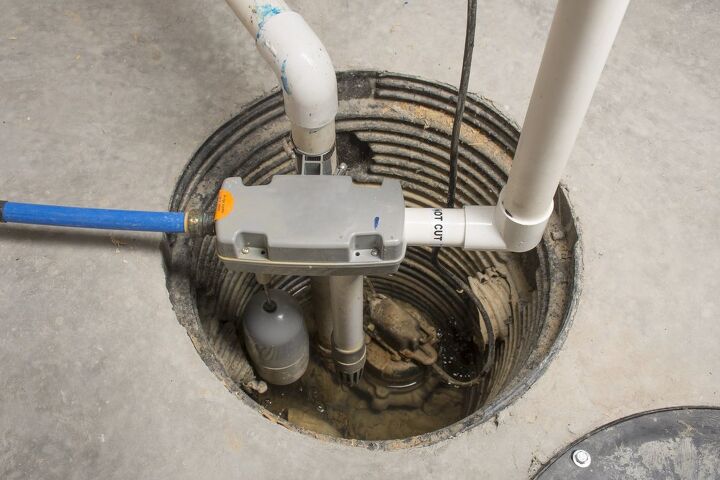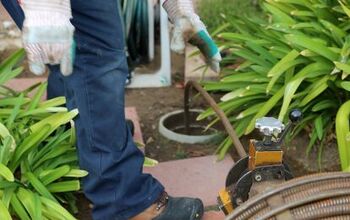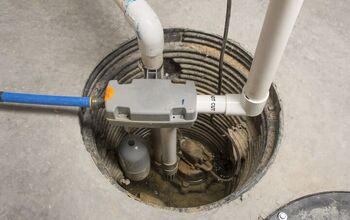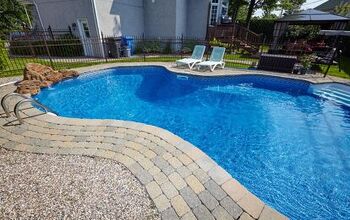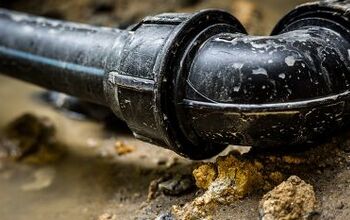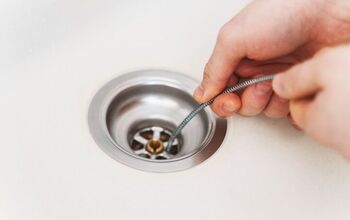Can A Sump Pump Drain Into The Sewer Line? (Find Out Now!)

The sump pump in your house is essential. It helps clean your water supply by pushing waste through your plumbing system. But can a sump pump legally drain into a public sewer line or not? Here’s the answer.
States want to prevent sewage treatment plants from becoming overwhelmed. So, most states don’t let homeowners tie sump pumps to the sewer system. However, each region has different rules. So, check your local regulations to find out more details.
Don't want to do it yourself?
Get free, zero-commitment quotes from pro contractors near you.

Can You Hook a Sump Pump to a Sewer Line?
It’s illegal in many places to hook a sump pump to the sanitary sewer line. But you can usually attach a sump pump to storm sewers if you have access to them. That’s because hooking up to the main sanitary line can cause problems back at the wastewater treatment facility.
Moreover, this move can change the cost of your average utility bill. And that’s why many homeowners do it. But draining your sump pump via the town’s sewer line also means your usage isn’t as closely tracked. So, you essentially steal resources when you connect directly to the sewer.
Will Hooking My Sump Pump to the Sewer Line Damage My Home?
Attaching your sump pump directly to the sewer line may seem convenient, and that’s because it is. However, you may be putting your property at risk of water damage and sewage problems. And that’s especially true during periods of heavy rainfall or flooding.
Too much water ad debris in your system can spell trouble. You may even start to smell foul odors seeping from your basement, drains, vents, and faucets. Meanwhile, if clogs are causing the odors, your plumbing could develop leaks and bulges that are expensive to fix.
Furthermore, your home may be cross-connected with other houses in the area. So, you could end up overloading the system for your entire community. And if more than one property does the same thing, it could crash the community’s water supply until contractors repair the problem.
Where Do Sump Pumps Drain?
Most of the time, you install sump pumps beside your house. Then, they help remove water and effluent from the sump pit. And your sump pit is usually located somewhere in the lowest part of your basement. Together, they whisk waste away from your property and in the direction of the nearest treatment plant for cleaning.
Typical sump pumps send wastewater and debris in the opposite direction of your house. However, the course depends on other properties in your area. So, the local government maintains a municipal storm drain system or a dry well to help provide services to all people.
Is It Illegal to Sump Pump Into the Street?
Laws about sump pumps vary from state to state. That means it’s your responsibility to find the details and obey regulations. Remember, those laws are there for a good reason. For example, you can’t always pump water and waste into the street because it’s unsanitary for the community.
Instead, try to sump pump into your side or back yard. Maybe route it toward drainage ditches if you can. Some cities offer access to storm sewers too, but you might need clearance to use it or connect your home to the system. Check your municipal code for more information.
NOTE: Sanitary drain systems are not the same as storm drain systems. Try not to get them confused.
How Far Can You Run a Sump Pump Hose?
The length of your sump pump hose depends on many things, including the size of your home and water table. An average-sized house with the usual water table generally requires a 1/3 HP sump pump. You should get at least 7-10 feet of vertical lift from the pump with that configuration.
So, if you have a 1/3 HP sump pump, get no less than 7 feet of hose. And be sure to pay attention to the elbows in your system. That’s because a 90-degree turn or horizontal portions can increase the hose length requirement by several feet.
Do Sump Pumps Need Maintenance?
Your home’s sump pump needs regular maintenance to keep it working correctly. After all, every drop of water that’s around your home gets filtered through the sump pump pit. So, after a while, you may have to unplug and clean it. Most experts recommend you do that at least once a year. And here’s how you do it:
Step 1: Unplug the Sump Pump and Remove It from the Basin.
You may have to wait a few minutes for it to stop working.
Step 2: Read Your Owner’s Manual for Facts about Bearing and Lubrication.
Each sump pump is different, so don’t skip this step.
Step 3: Carefully Remove All Debris from the Basin.
Use gloves and tools to prevent contamination.
Step 4: Put the Sump Pump Back on the Basin.
Make sure it’s properly aligned and secured.
Step 5: Reinstall the Sump Pump by Plugging It Into the Outlet.
Give the system a few minutes to turn back on and start pumping again.
Maintaining your sewer system is no easy task. So, if you need more help, don’t hesitate to call a professional.
Don't want to do it yourself?
Get free, zero-commitment quotes from pro contractors near you.

Related Questions
How Many Years Does a Sump Pump Last?
The average sump pump can last for about ten years with proper maintenance. However, the lifespan also depends on the manufacturer, the horsepower, the drainage route, and the location of your house. If your sump pump has to work extra hard because of high water tables or natural disasters, you may have to replace it sooner.
What’s the Average Cost to Replace a Sump Pump?
Expect to spend around $700 to $2,000 for a new sump pump installation. The pump itself may not cost as much, though. Pedestal pumps are generally less than $200. Meanwhile, submersible pumps are a bit more expensive. Either way, you’ll have to pay between $50 and $200 per hour for installation services.
The Takeaway
Sump pumps are crucial, and so is their functionality, but you can’t use them in certain ways. Check your local laws and contact a plumbing professional for more information.
Related Guides

Tiffany Nichols specializes in aesthetics, design, marketing, and manufacturing. She's a copywriter and editor for several home renovation companies in the U.S. and works alongside some of the biggest names in the industry. Her hobbies include architecture, art, mental health, and fashion.
More by Tiffany Nichols



